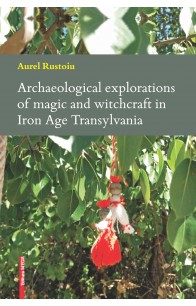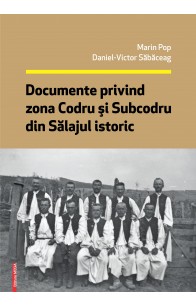Rezultate căutare pentru 'Aurel Daniel St��nic��'
The landscape of any given region has almost always being present in one way or another in archaeological reports, studies and monographs since the beginning of this scientific discipline. More often than not, landscape descriptions only aimed to provide an obligatory environmental background for the study of settlement patterns and subsistence strategies of various communities by listing “relevant” geomorphologic, pedological or faunal features, climatic patterns, mineral resources or historical/traditional land-use practices. The required data were usually lifted from modern studies, repertoires, atlases, catalogues and handbooks whose original scope often had little to do with the investigation of past societies and their practices. Likewise, archaeological sites were commonly plotted on modern-age maps that included regulated waterways, intensive agriculture, mining or quarrying, and dense transportation networks and urbanization.
However, changes in the archaeological paradigm of the last few decades, as well as the subsequent adoption of several investigative methods from other sciences (e.g. geophysics, palynology, geology, biology, biochemistry etc), have challenged the stereotypical, mono-dimensional approach that favoured a deterministic interpretative model, leading in turn to the emergence of the sub-discipline of landscape archaeology. This has also been influenced by diachronic studies of the evolution of ecological systems which focused on human beings as important actors, acknowledging that the interactions between past communities and the environment were highly dynamic processes that sometimes have repercussions until today. As a consequence, alongside the investigation of geomorphologic and hydrologic features and their impact, more attention has recently been paid by the archaeologists to the socio-political, economic, cultural and ideological dimensions of the landscape as products of human agency. (from the „Introduction”)
„La sfârşitul celui de-al Doilea Război Mondial, ţara noastră avea să intre în sfera de influență a U.R.S.S. Încă din timpul războiului Stalin afirma, şi dădea de înţeles aliaţilor, că acest război va fi altfel şi că imperiul sovietic îşi va impune propriul său sistem, până acolo unde va ajunge armata sa. Cu toate că Iuliu Maniu şi ceilalţi lideri ai partidelor istorice au sperat, până în ultimul moment, în ajutorul S.U.A., Angliei şi Franţei, acest lucru nu s-a întâmplat, Europa fiind împărţită în sfere influenţă. Din păcate, ţara noastră a căzut în sfera de influenţă a imperiului sovietic, condus de către dictatorul Stalin, care a reuşit să-şi impună regimul şi în România, până în anul 1947, cu ajutorul Partidului Comunist din România, un partid minuscul ce nu avea decât aproximativ 1000 de membri la 23 august 1944.” (din „Studiu introductiv”)







